Planned vision: Arborea offers up clues to its architecturally ambitious past as Mussolinia

The phrase ‘Fascist new town’ brings up a few associations. You might picture ruthlessly centralised neoclassical buildings, formal axes, some haranguing statues and eagles, lots and lots of marble. You wouldn’t necessarily imagine palm trees, cottages, canals, a Gothic church, bustling cafes on a piazza and the smell of manure. That is, you wouldn’t see Arborea, a new town founded in Sardinia in 1928, and possibly better known – if known at all – by its original name, Mussolinia. It is the subject of Oliviero Olivieri’s photography series, featured on these pages.
This was the first of several new towns built on drained marshland in Mussolini’s Italy, a project that once attracted widespread admiration. For instance, in his popular book Town Planning, published at the start of the Second World War, Thomas Sharp drew attention to the ‘half-dozen boldly planned new towns’ of Fascist Italy and suggested that they might be a possible model for post-war Britain – in a democratic way, of course. More recently, Jonathan Meades praised the eclecticism and experimentation of interwar Italian architecture in his BBC film Ben Building. The sharp contrast with the officially prescribed classicism of Nazi Germany was so pronounced, he argued, that it supported the questionable view that the Third Reich was so different from Fascist Italy that it didn’t even merit the term ‘Fascist’. Certainly, the Nazis never got round to new towns, although they planned a few – folksy places, designed to colonise the newly acquired territories of Poland and the Soviet Union. Arborea, or Mussolinia, reveals itself to be something rather similar.
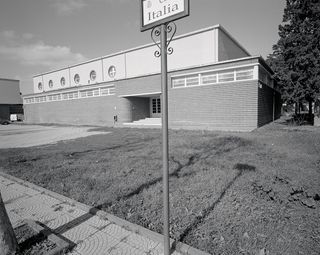
The Casa del Balilla (House of the Fascist Youth) is a long, modernist building that stands next to the Casa del Fascio; it is now Arborea's sports hall
The most famous Fascist new town is not in Italy at all, but in Eritrea, then part of newly conquered Abyssinia. The much-photographed Asmara was designed in the late 1930s by designers from the rationalist school of Italian architects – inspired compromisers between futuristic modernism and classical heritage. Mussolinia was part of an earlier, less violent, but similarly clear process of colonisation within the Kingdom of Italy itself, where Sardinia was always somewhat apart, linguistically and culturally.
The project, begun in the 1920s, of draining the malarial marshes in the south-west of the island was undertaken by settlers from north-east Italy, rather than Sardinians. In theory, settling these pestilent lands and making them productive would help Mussolini achieve his much-vaunted goal of autarky, economic self-sufficiency. You notice something is different when you drive from the nearest railway station, at Marrubiu, to the new town: suddenly the roads are rigidly straight, running alongside canals in rich arable land, in the shadow of harsh, bare mountain ranges. On that level, the project worked.
The architect of Mussolinia, between 1928 and 1939, was Giovanni Battista Ceas, a critic and historian as well as a designer. Accordingly, there’s very little trace in the first clutch of buildings of the more modernising trends in Fascist Italy, such as the monumental dreams of Futurist architects like Antonio Sant’Elia or the cold rationalism of Giuseppe Terragni. A hospital, a school, a town hall and a police station are in an invented vernacular bearing little resemblance to Sardinian architecture. Rusticated stone takes up most of the lower exteriors, with warm, yellowish render on the upper levels; roofs are pitched and ornamentation is limited to gestures, like growling faces above the windows of the small shopping parade. But most of Arborea is cottages, one or two of them rationalist but the majority like little Roman villas, with graffito cherubs and rural-neoclassical details. Aside from shrines to the Virgin Mary, the only statue is a bust of the engineer of the drainage project, Giulio Dolcetta, his face aligned perfectly with a cypress tree.
Cross a pretty concrete bridge over the canal and you’re in the main piazza. It’s symmetrical, but subtly so, with the buildings on either side evenly spaced if » not identical. In the middle is a Gothic church, with a tower in a free style somewhere between mild art nouveau and Venetian. Inside is one of few clues to the date of the town’s founding, in a very interwar, muscular scene of Jesus and the disciples that is painted behind the altar. Next to the church is a disused cinema, in a similar, eclectic style, looking more like an architecturally ambitious barn. On the other side of the main north-south road (now known as via Roma – the streets originally had numbers, not names) is a grain silo complex. One part is in Ceas’ neo-Roman manner, with the other in a more dramatic industrial concrete.
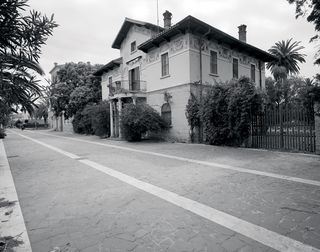
The first buildings of Mussolinia were villas in a style that emulates the domestic architecture of the Roman Empire with decorative friezes and porticoes
This towering silo is one of three buildings that make up Arborea’s skyline, alongside the church and the Casa del Fascio (House of the Fascist Party). Leave the square and walk towards the edge of town – not hard to do, as you can cross Arborea east to west in ten minutes – and you’ll find a more confident architecture, as Ceas suddenly switched towards rationalism. The Casa del Fascio, of 1934, is a laconic assemblage of cubic volumes in concrete and brick, stepping upwards to a gallery and a tall concrete bell tower. These three punctuations on the skyline sum up the values the new town was meant to embody: Fascism, Catholicism, autarky.
After Mussolinia was renamed Arborea, in 1944, it ceased to be an architectural showcase, offering up the same suburban buildings of any small Italian town. The exception is the Hotel Le Torri, which has a strange, monumental, neo-rationalist style, with looming square towers. In the lobby is a bound collection of the local paper from the 1930s, Brigada Mussolinia. It reveals the sort of place the town once was, and not just in articles on the colonisation of Abyssinia and Libya, on royal weddings, or in praise of autarky and Italy’s German ally. ‘The Story of Mussolinia’ shows the main square stark and imposing, devoid of the palm trees and benches that give it life today. The Casa del Fascio is pictured, Il Duce speaking from the gallery beneath the elegant, modernist campanile. Without these artefacts – and without the clues of the strange, un-Sardinian landscape and the gridiron imposed upon it – you might never guess that Arborea was once Mussolinia.
As originally featured in the November 2016 issue of Wallpaper* (W*212)

The Casa del Fascio (House of the Fascist Party) showed a shift towards modernism in Mussolinia with its sleek bell tower; it was opened by Mussolini in 1938
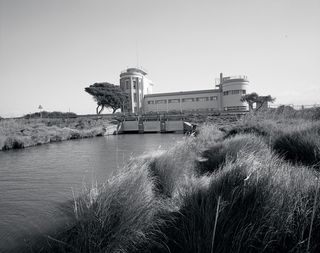
Later parts of the pumping station were designed by Giovanni Battista Ceas in a more rationalist style, as the architecture of Mussolinia shifted towards the contemporary

The school, on the main square, followed Ceas’ invented vernacular for a number of public buildings, with rusticated stone on the lower part of the exterior
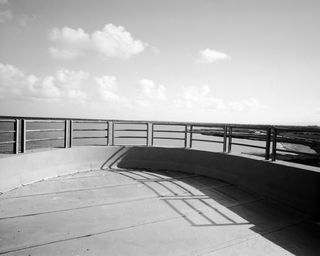
View from the rooftop of the Sassu water pump station
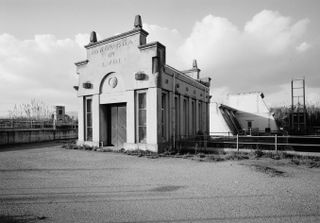
The Luri water pump station

Arborea's train station
Wallpaper* Newsletter
Receive our daily digest of inspiration, escapism and design stories from around the world direct to your inbox
-
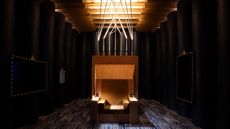 David Lynch presents 'A Thinking Room' at the Salone del Mobile
David Lynch presents 'A Thinking Room' at the Salone del MobileHere's a first look at the David Lynch Salone del Mobile 2024 installation, a cinematic experience within the fair curated by Antonio Monda
By Laura May Todd Published
-
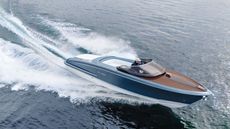 Riva El-Iseo is the legendary boat builder’s first fully-electric motor yacht
Riva El-Iseo is the legendary boat builder’s first fully-electric motor yachtThe Riva El-Iseo electric speedboat blends classic Italian lines with a silent, powerful and zero-emission powertrain
By Jonathan Bell Published
-
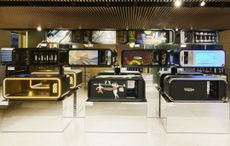 Technogym Home Bench 40 ways: designers interpret the home exercise classic
Technogym Home Bench 40 ways: designers interpret the home exercise classicTechnogym marks its 40 anniversary with 40 special editions of its Home Bench created in collaboration with international creatives
By Rosa Bertoli Published
-
 Modernist architecture: inspiration from across the globe
Modernist architecture: inspiration from across the globeModernist architecture has had a tremendous influence on today’s built environment, making these midcentury marvels some of the most closely studied 20th-century buildings; check back soon for new additions to our list
By Ellie Stathaki Published
-
 Giovanni Michelucci’s dramatic concrete church in the Italian Dolomites
Giovanni Michelucci’s dramatic concrete church in the Italian DolomitesGiovanni Michelucci’s concrete Church of Santa Maria Immacolata in the Italian Dolomites is a reverently uplifting memorial to the victims of a local disaster
By Jonathan Glancey Published
-
 Milan’s 10 Corso Como revamp nods to the concept store’s industrial character
Milan’s 10 Corso Como revamp nods to the concept store’s industrial characterMilanese concept store 10 Corso Como unveils its new look by 2050+, a stripped-back design that nods to its 20th-century character
By Ellie Stathaki Published
-
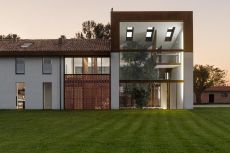 Carlo Ratti announced curator of Venice Architecture Biennale 2025
Carlo Ratti announced curator of Venice Architecture Biennale 2025Carlo Ratti has been revealed as the Director of the Architecture Department at the Venice Architecture Biennale 2025, with the specific task of curating the 19th International Architecture Exhibition
By Ellie Stathaki Published
-
 RIBA Photo Festival 2023 explores photography and the built environment
RIBA Photo Festival 2023 explores photography and the built environmentThe RIBA Photo Festival 2023 runs 8 – 11 November, exploring photography and its powerful relationship with architecture
By Ellie Stathaki Published
-
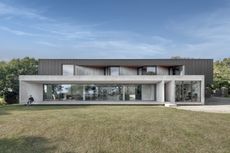 Minimalist architecture: homes that inspire calm
Minimalist architecture: homes that inspire calmThese examples of minimalist architecture place life in the foreground – clutter is demoted; joy promoted
By Ellie Stathaki Published
-
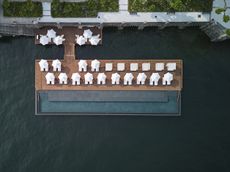 Floating infinity pool by Herzog & De Meuron at Lake Como is largest of its kind
Floating infinity pool by Herzog & De Meuron at Lake Como is largest of its kindHerzog & de Meuron creates the largest floating infinity pool in the world for Mandarin Oriental in Lake Como
By Lauren Ho Published
-
 The finest brutalist architecture in London and beyond
The finest brutalist architecture in London and beyondFor some of the world's finest brutalist architecture in London and beyond, scroll below. Can’t get enough of brutalism? Neither can we.
By Jonathan Bell Published